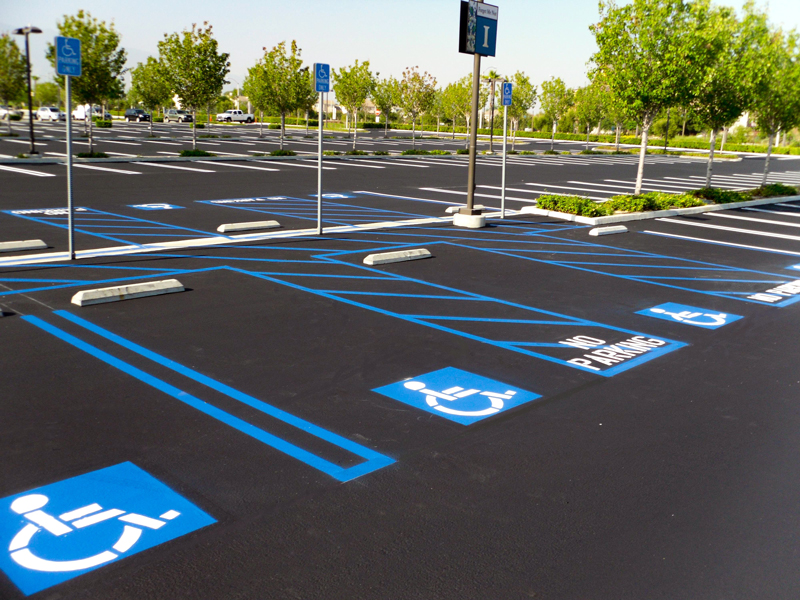
What is it?
ADA (Americans with Disabilities Act) compliance is an important social and legal matter regarding the accommodations of individuals with disabilities. Signed into law in July 1990 by President George H.W. Bush, the Americans with Disabilities Act strives to ensure that those with disabilities can receive and enjoy the same level of access, rights, and opportunities for business and services as those without.
The area of particular interest to ourselves and our customers is “Title III – Public Accommodations and Services Operated by Private Entities.” While Title III itself is very detailed and would take quite some time to explain fully, the main takeaway for how it pertains to what we do is that accommodations and services must be accessible to those with disabilities. In our industry, that access takes the form of special parking spaces, wheelchair loading areas, ramps, truncated domes, signage, and specific striping. There are officially-set guidelines for how each of these must be completed, and certain businesses are required by law to provide 1 or more of these accommodations.
Why is it important?
Aside from providing safe and equitable access being morally correct, it is a legal requirement as well and the repercussions of not abiding by these laws can be somewhat severe. The majority of our calls for ADA compliance work are received after formal complaints have been made against the property owner and, in some cases, have fines and/or civil lawsuits pending. These fines and lawsuits can be costly and time-consuming, and are preventable with the right research.
What do I need to know?
What’s important to pay attention to is the size and nature of your business and parking areas. The ADA requirements are different for apartments, townhomes, shopping centers, medical centers, individual businesses, etc. and will vary depending on your size and type of work. What does remain standard are some markings and sizing, in that spaces for handicap accessible vehicles are generally a minimum of 8’ wide for cars and 11’ wide for vans with a lift (unless the neighboring space is also a minimum of 8’ wide). There must be a ramp leading to the sidewalk from these spaces at a safe slope to allow for the use of wheelchairs, walkers, and other assistive devices, but the size can vary depending on existing circumstances.
When we are contracted for ADA compliance work, we strictly abide by the directions and reports designed by your engineering firm to ensure that all levels of compliance are met and up to today’s code. We only complete the work that is specifically requested of us by the client and do not perform our own ADA compliance assessment on any property. If you would like an assessment completed, please consult with an engineering firm familiar with ADA compliance, and communicate to your Project Manager/Estimator that you are having this done during your property walk-through and the proposal process.
